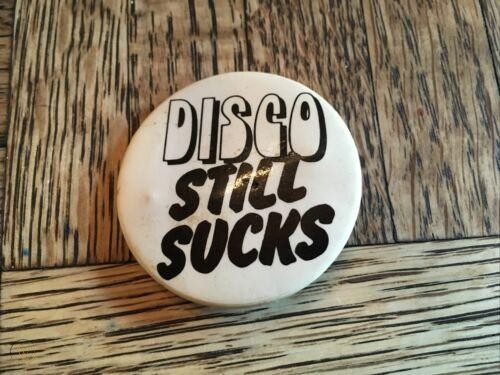
Pin-back buttons have been a part of our culture for the past 125 years. You probably associate pin-back buttons with elections, sports, and social rights protests. However, if you Google “What’s the most valuable button?” you’ll find that the answer is a button from 1789 created to celebrate George Washington’s inauguration. It sold for $225,000. But what about music buttons—the buttons created by bands, artists, and record companies to promote albums and tours?
When I was in graduate school earning my master’s degree in Library and Information Science, I worked as a remote summer intern for the Busy Beaver Button Museum. This museum’s mission is to collect buttons and share their fascinating histories with the public. Buttons are, after all, culturally and historically significant artifacts. As an intern, I learned about a topic I knew nothing about before I started: button collecting and history.
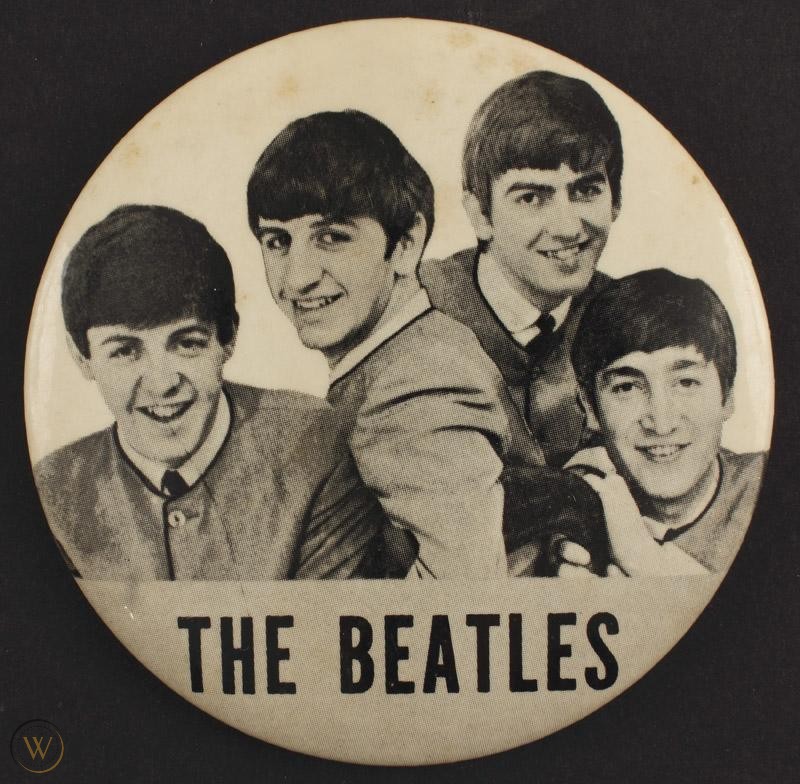
My favorite buttons to research and write about were entertainment buttons— specifically music buttons. If you know me, you know that in my world, disco never died, heavy metal rocks, and the California-cool Laurel Canyon musicians are gods. So, I cherished learning about buttons associated with my favorite genres and artists. While I haven’t started my vintage music button collection (yet), I have started thinking about their value, availability, and significance in culture.
The History of Music Buttons
Pin-back buttons made their first appearance in America in the world of politics. Dating back to 1789 (as mentioned above), citizens wore buttons to display their political party affiliation or for whom they were voting. Eventually, buttons became a useful tool for companies (like tobacco, chewing gum, and cereal brands) for promoting their products. So, how does an item that started as a tool for politicians and advertising become an item used by young people to express opinions and beliefs through musical interest? And how did the button become a fashion statement for music fans?
Music buttons made their debut earlier than the 1950s, but the rise of rock ‘n roll caused a music button boom. Thanks to radio, television, and vinyl records, music became more accessible and widespread. And due to young women playing a more prominent role in consumer culture every decade, male musicians started creating merchandise for their fanbase.
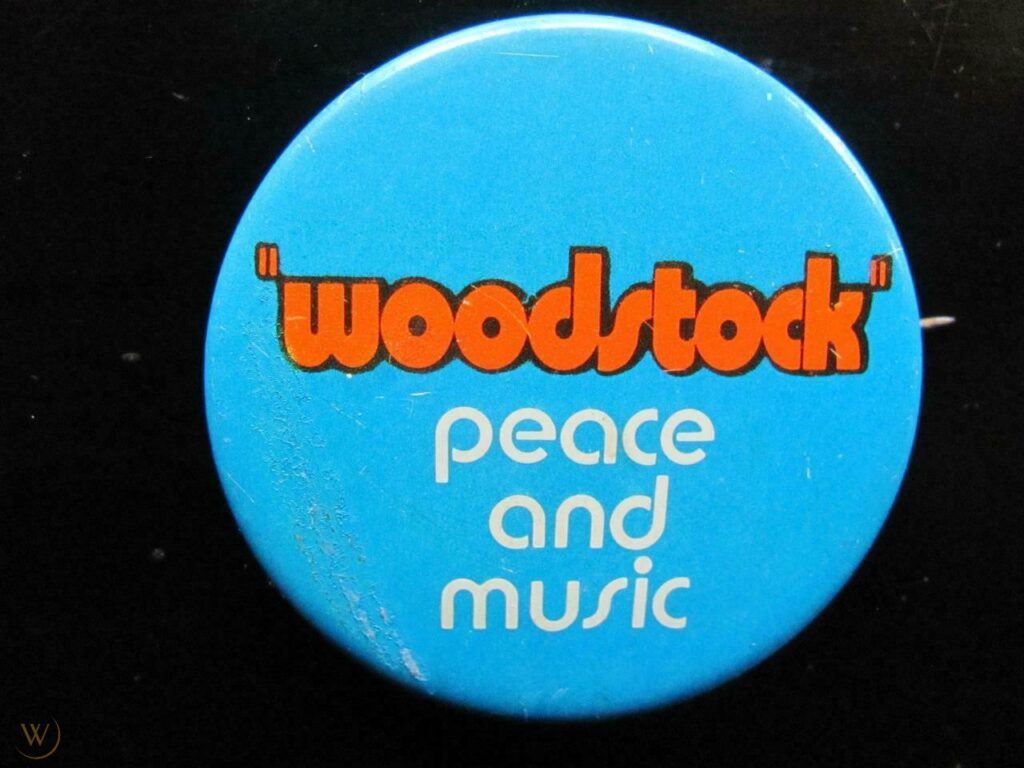
The most exciting period for the music button is, in my opinion, the late 1960s. The Vietnam War created a movement of resistance and is partly responsible for the rise of the counterculture. During this period, music and politics merged as bands and artists openly condemned the war, the government, and politicians through their songwriting. Music events, like Woodstock, became historical and cultural landmarks in time and demonstrated the liberation, enlightenment, and healing young people felt through music. Wearing buttons on clothes became essential for self-expression.
A perfect representation of the merging of music and politics is the John and Yoko button from 1972, shown below. John Lennon and Yoko Ono were two of the loudest voices protesting the Vietnam war. When the Nixon administration initiated deportation proceedings against the couple, their supporters rallied together. John and Yoko firmly believed that their deportation was politically motivated due to their outspoken opinions on the war. As a result, buttons were created by the “National Committee for John and Yoko” and the “Committee for Artist Freedom” to influence the administration to let them stay in the USA.
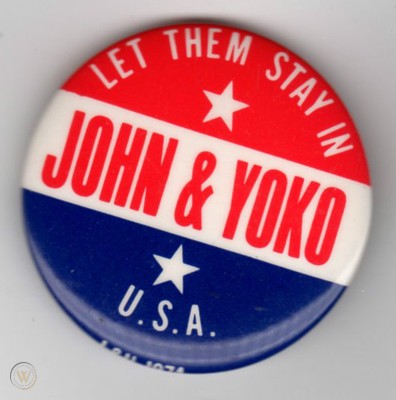
From Statement to Fashion Accessory
In the 1970s, music buttons remained an essential method for youth to express their musical interests. But buttons also earned a new position in culture: fashion accessories. I immediately think of the punk rock and heavy metal scenes when I think of music buttons. I picture mohawks, colored hair, face piercings, combat boots, and denim and leather jackets covered in music pinbacks buttons. And there’s a reason for that. With the explosion of punk rock in the 1970s and other rock genres came a boom in pin-back production and accessorizing. The Ramones are most notably connected to the rise of button fever. Still, many other bands took advantage of the opportunity to sell merchandise for fans.
Because music fans were dedicated to buying and showing off band merchandise, button creators decided to make buttons in different shapes. Below is an example:
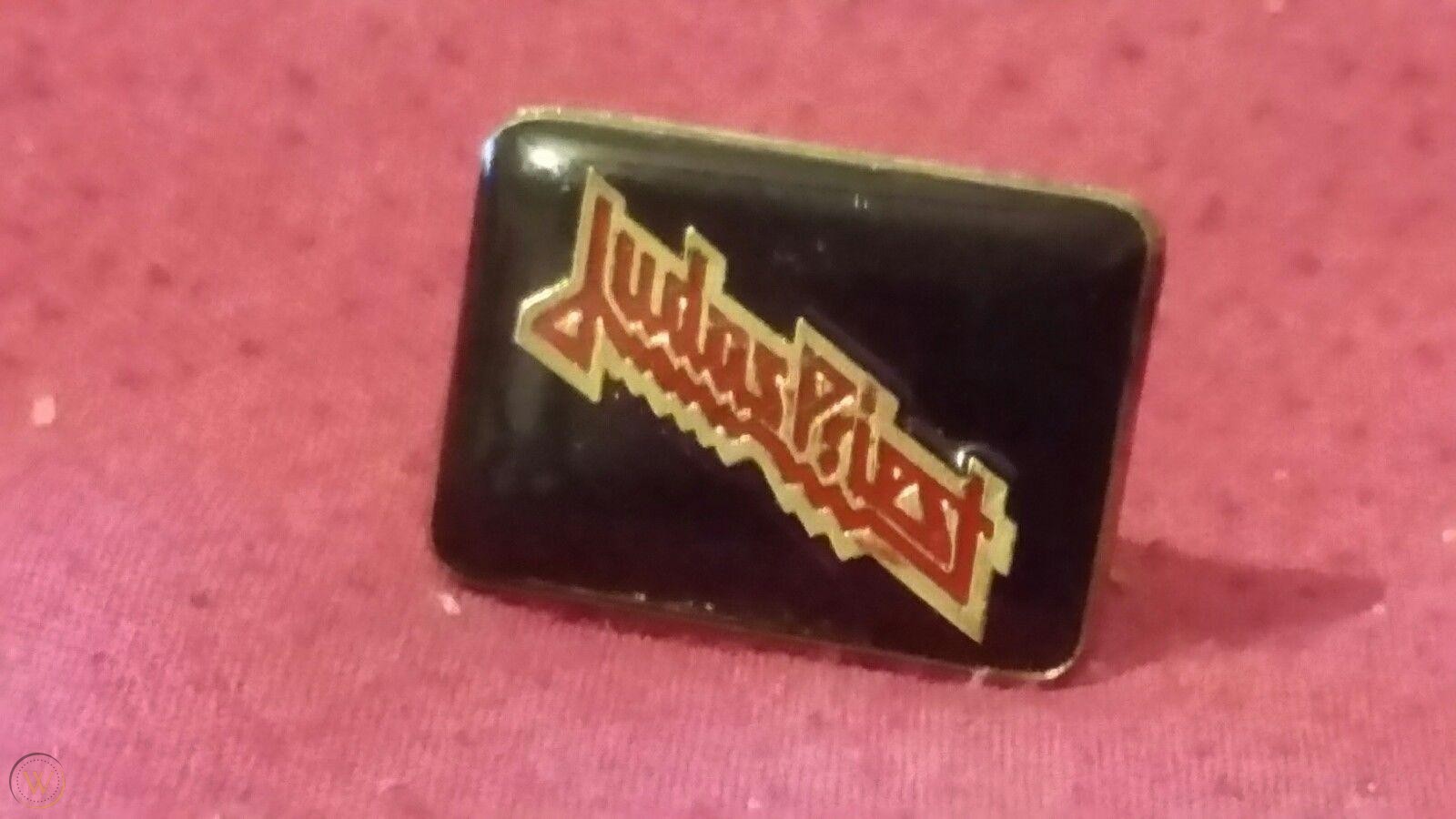
Average Value
On average, vintage music buttons aren’t that expensive! You can scroll through Etsy and eBay and find buttons for as low as $3. I’ve seen online that the average price for vintage music buttons is about $10. You can also find them at your local antique or vintage shop for similar prices.
However, you may still come across valuable buttons or collections of buttons. On eBay, the most expensive music button I found is from 1966. It’s a button (and a ticket stub) from the Beatles’ Dodger Stadium Concert. It can be yours for just $650! A Peter Criss (co-founder of and drummer for Kiss) button from 1977 is $500, and an original Grateful Dead pin from 1967 is on the market for $399.
While researching music buttons, one of my favorite finds was a button vendor that featured David Bowie, Hall and Oates, Mick Jagger, Bruce Springsteen, Madonna, Duran Duran, George Michael, and many more ‘80s music icons!
But what makes some of these buttons more valuable than others? You may think that Michael Jackson, Prince, or Van Halen buttons are more expensive considering their status as pop culture icons but think again. Because of their popularity, more merchandise was manufactured. Thus, most of their buttons aren’t regarded as rare or highly valuable. Instead, the general rule is the more obscure the band or artist, the more expensive the buttons.
The value of a button is also based on who created it and who owned the rights. In his article, Beyond Vinyl, Stephen M.H. Braitman explains, “it takes some detective work to separate the common from the rare in collecting music pins.” He uses the Beatles as an example: “Knowing which Beatles buttons were actual Capitol or Apple promotional items instead of licensed (or unlicensed) products is important because the promos are much rarer.”
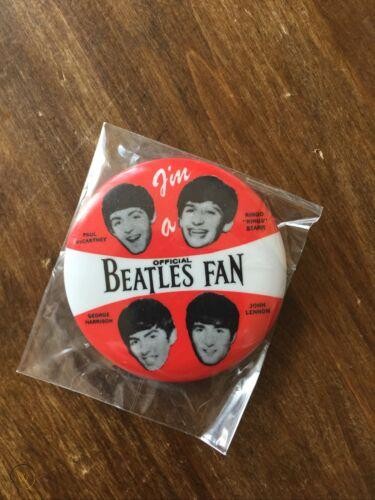
I never grew up buying or collecting buttons, but the older I get, the more I wish I had. So maybe it’s time for me to step into the world of button collecting, and perhaps I should save my money and start with that button kiosk!
Emily Teachout is a professional archivist who loves history, antiques, and all things vintage. She is also the owner of the Etsy shop “The Archivist’s Attic,” where she sells vintage advertisements. In her spare time, you can find her watching Turner Classic Movies, roller skating, listening to 80s hair metal, writing about ads for her blog, arguing about the importance of disco, and playing with her cat, Alice Cooper.
WorthPoint—Discover. Value. Preserve.
The post Collecting Vintage Music Pin-back Buttons appeared first on WorthPoint.
